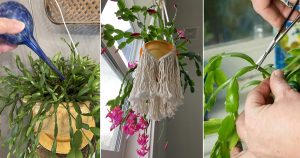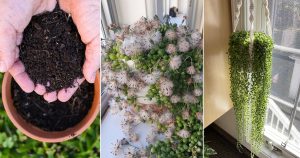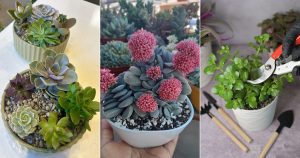Struggling to propagate your succulents? We’ve got you covered! Check out this water rooting hack that will grow your garden in no time!
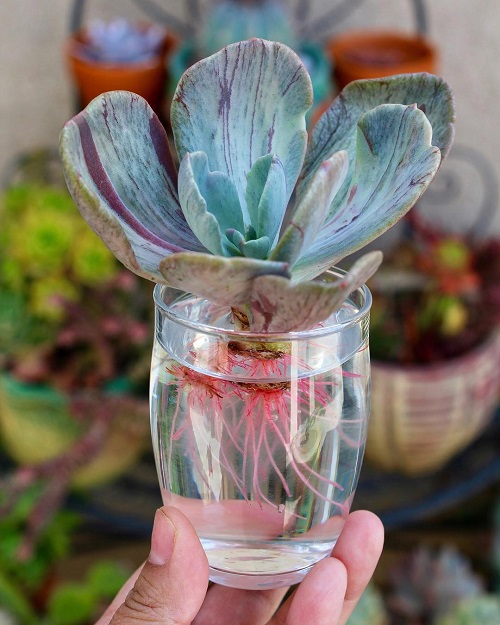
Rooting cuttings directly in soil can be tricky. Without a root system, young plantlets often fail to adjust. So the simple fix is to skip the soil at first and use water to kickstart healthy roots before planting.
What is the Unique Water Propagating Hack for Succulents?
The process is quite simple, and when you think of it, very logical as well. Here’s how to do it:
1. Choosing the Right Container
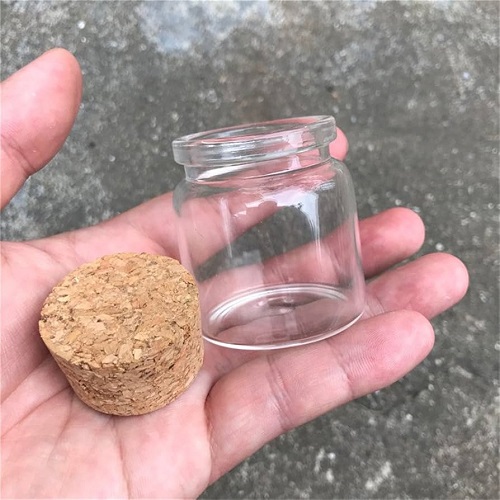
It may seem futile to mull over the kind of container you’ll need for this trick. You may think, “We just need water, so how will the type of glass matter?” But in reality, every aspect plays a role in the successful propagation of your plant.
Choose a transparent jug, wide-mouthed vase, or glass. Glass or non-toxic plastic is the best material. The size can vary depending on the number of cuttings you choose to propagate at once.
Tip: Avoid using metal containers, as they may leach harmful elements into the water and affect root growth.
2. Filling it with Water
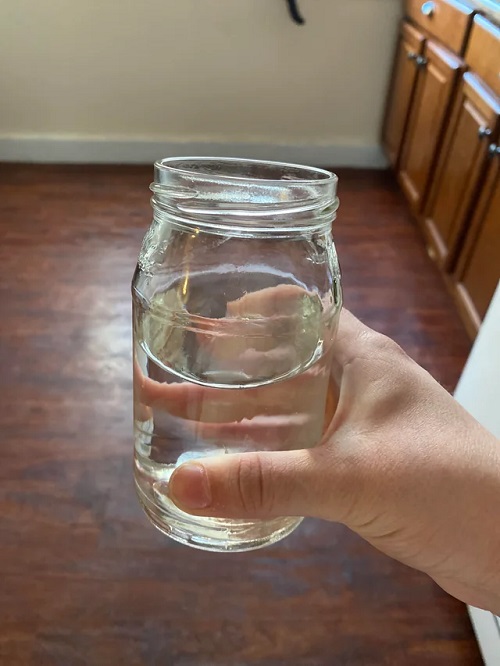
The type of water can also make a difference. The small amount of dissolved chemicals present in tap water can hinder the propagation rate. To be on the safer side, use distilled water.
Fill the container of your choice up to the brim. Make sure there is no space left as you will need to dip your cuttings into the water.
You can also let tap water sit out overnight before using it—this allows chlorine to evaporate, making it safer for delicate cuttings.
3. Obtaining the Cuttings
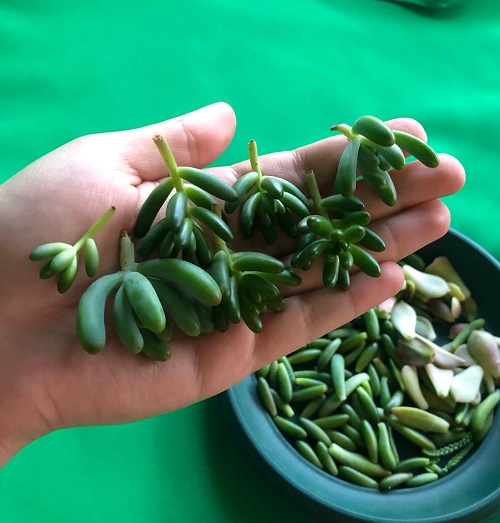
Now that the apparatus is almost ready, you’ll need your cuttings! To obtain these, snip away little portions of the mother plant, ensuring that each cutting has 1-2 leaves and a couple of nodes. This is vital to ensure photosynthesis and allow new roots to develop.
Note: Choose a healthy mother plant as leaf cuttings produce clone copies of the original plant. Any physical or biological flaw in the mother will be seen in the new plant as well.
4. Securing the Cuttings in Place
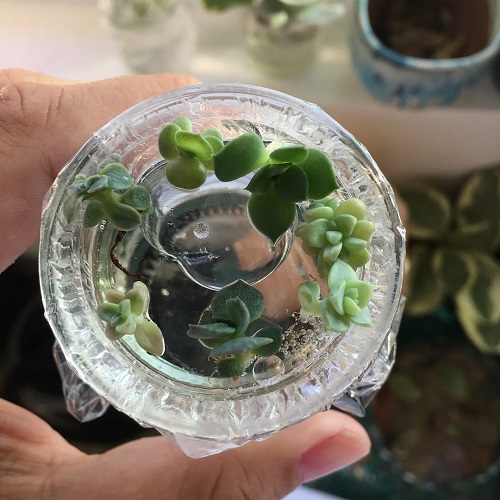
This step is where the magic happens! Since you can’t simply throw the cuttings into the vase, as they will sink and drown. You will need to cover the mouth of the container with a clear plastic wrap. Using kitchen-grade Saran Wrap works perfectly in this situation.
Now, to secure the wrap around the container, use a hair tie or a durable rubber band. It should look like a transparent roof on your water vase! Next, simply poke holes into the wrap using a toothpick.
Ensure that each hole is just enough to hold a leaf cutting in place. These cut-outs will act as tiny compartments in which the leaf cuttings are dipped into the water.
5. Placing the Apparatus
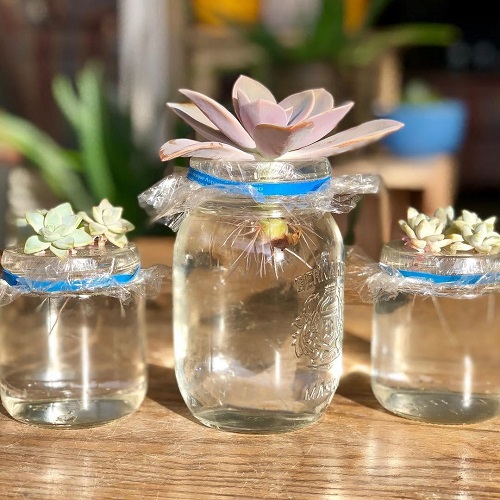
Now that the majority of the process is done, all that is left to do is provide the leaf cuttings with the rest of their growth requirements. Since they are already dipped into water, irrigation will not be necessary.
However, you must place your transparent glass on a north or east-facing windowsill to ensure optimal sunlight exposure. You may also have to change and refill the water once the medium begins to become cloudy.
Tip: Always use room-temperature water while refilling, as sudden temperature changes can stress the cuttings.
6. Transplanting the Cuttings
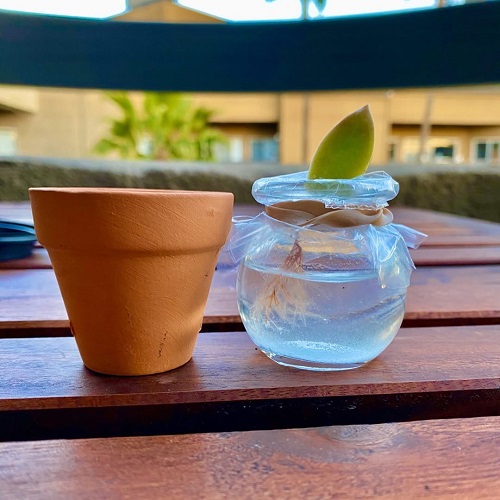
In a few weeks’ (2-6) time, the cuttings will develop a strong root system that is at least a couple of inches long. Here’s where the transparent container helps. Along with allowing sunlight to penetrate, the glass also allows you to observe the root growth.
Once the roots reach the optimal size, you can gently transplant them into a pot filled with suitable potting mix. Since the root system is strong, it will adapt and function optimally in the new substrate.
After transplanting, keep the soil slightly moist for the first week to help the roots settle in before switching back to a normal succulent watering schedule.
Key Points to Keep in Mind
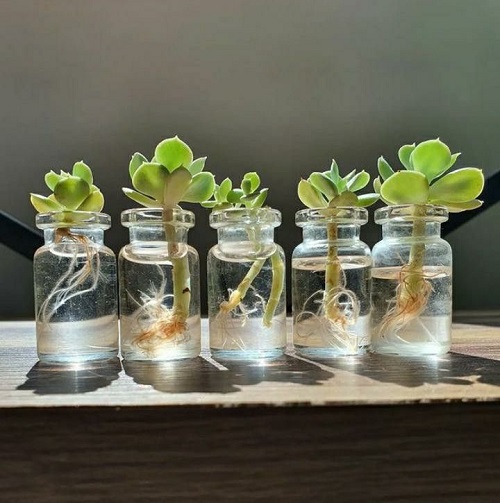
- Propagation success isn’t 100%, so take multiple cuttings.
- Let the cut ends callus for 2–3 days before rooting to prevent rot.
- Cuttings may go into shock after transplanting—be patient; they’ll bounce back.
- Rushing the process or over-fertilizing can do more harm than good. Slow and steady wins the race here!
- Jade and Snake Plants root faster in water—perfect starters for beginners.
Now that you know the cool water propagation trick, you’ll need to buy a bunch of pots to accommodate all the new succulents! Tell us in the comments section which other issues you run into while growing succulents, and we’ll help you resolve them!


